#plantagenet england
Text
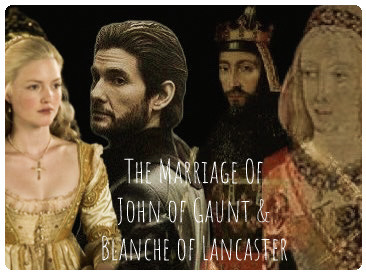
“Marriages amongst the elite in the fourteenth century were rarely love matches. Politics, territory and wealth determined the course of matrimony for young noblemen and women. The marriage between Gaunt and Blanche was another link in the political union between two powerful houses—Plantagenet and Lancaster.
As Gaunt and Blanche were distant cousins, their marriage required a Papal dispensation, as interfamilial marriage was in breach of Canon law. In the New Year of 1359, at the Papal court at Avignon, Pope Innocent VI was duly presented with a request from the King of England: that he 'enable his son John, the Earl of Richmond and the Lady Blanche, daughter of Henry, Duke of Lancaster, to intermarry, they being related in the third and fourth degrees of kindred’.
The Pope sanctioned the marriage and, soon after the dispensation reached England, the date for the wedding was set for May.
The ceremony would be held at Reading Abbey, one of the largest royal monasteries in Europe. The abbey was founded by the youngest son of William the Conqueror, Henry I, who invested heavily in it, supporting learning as well as prayer by funding an extensive library.
Support of the abbey remained in royal consciousness following Henrys death, for Empress Matilda - his daughter - donated a sacred relic: the hand of Saint James of Santiago. Over the next three centuries Reading Abbey grew to become a popular place of worship and burial for the elite, as well as a suitable location for Parliament to convene outside of London.
In May 1359, members of the nobility gathered to witness the marriage of John of Gaunt to Blanche of Lancaster. It was a union of cousins as well as great allies, heavy with the promise of peace between historic rivals, Lancaster and the Crown. The union made sense.
Blanche's elder sister, Maude, was married to William III, Count of Holland, Zeeland and Hainault, and the match between John and Blanche would strengthen domestic relations.
On a personal level, it was also a nod to the friendship between Edward and Henry, and the loyalty the Duke had shown throughout the highs and lows of the war in France.
Seventeen-year-old Blanche was an attractive choice of bride for the nineteen-year-old John of Gaunt. She was beautiful, pious, young and, shared with her sister Maude, she stood to inherit her father's enormous fortune, which through marriage would be controlled by Gaunt.
As medieval tradition dictated, when a woman married a man, she relinquished to him her chattels - land, property and money.
In the presence of a priest and of three or four respectable persons summoned for the purpose, John of Gaunt and Blanche of Lancaster exchanged rings and were married in the eyes of God and witnesses, overseen by the clerk of the Queen's chapel.
Blanche was showered with generous gifts: sliver buckles from the king and two rings of ruby, and pearl and diamond from John of Gaunt.
The wedding was an elaborate celebration and the subsequent banquet was particularly extravagant: guests were served richly spiced food and wine on tables covered in linen, silk and cloth of gold, and minstrels played for the durations the feasting.
The celebrations continued for days, with jousts held locally to mark the occasion. The wedding party then cheerfully made its way to London, where preparations were underway for an ever larger and more spectacular event.”
Castor, H. The Red Prince: The Life of John of Gaunt, The Duke of Lancaster. 2021.
Fancast: Holliday Grainger as young Lady Blanche of Lancaster & Ben Barnes as young John of Gaunt.
#plantagenet dynasty#Plantagenets#the Plantagenets#Plantagenet edit#House of Lancaster#John of Gaunt#Blanche of Lancaster#John x Blanche#Ben Barnes#holliday grainger#historian:#Helen Castor#House of Plantagenet#Lancaster#Medieval England#nobility#medieval nobility#Plantagenet England#Plantagenet#Edward III#Edward III of England#King Edward III#Empress Matilda#Henry I#abbey
14 notes
·
View notes
Text
Calendar of the patent rolls preserved in the Public ... 1399-1401 Henry IV. [Selected]

#henry iv of england#primary sources#king henry iv of england#henry iv#henry of derby#henry bolinbroke#plantagenet england#plantagenet dynasty#plantagenets#house of lancaster
0 notes
Text

Elizabeth of York, fashion character design, c. 1481.
#the wars of the roses#15th century#historical#medieval#british history#medieval england#art#illustration#sketch#edward iv#elizabeth woodville#elizabeth of york#henry vii#henry vi#margaret of anjou#margaret beaufort#isabel neville#richard iii#the white queen#the white princess#medieval fashion#historical fashion#character design#artists on tumblr#medieval costume#royals#house of york#plantagenets
245 notes
·
View notes
Text
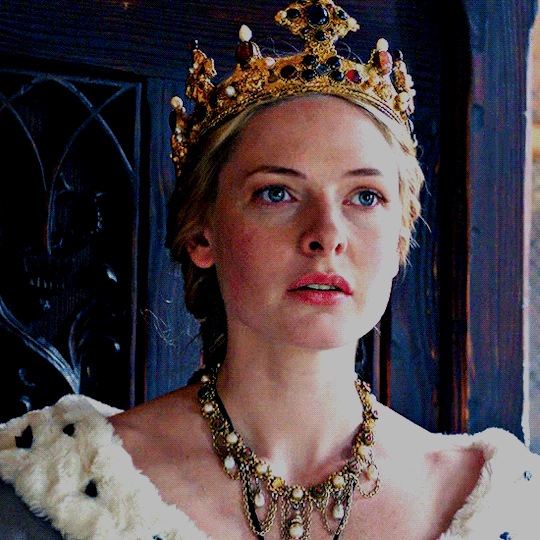

"When commanded by my husband, I even danced with my brother-in-law George: hand to hand and smiling into his handsome, boyish face. Again I am struck by how people like him on sight. He has all of the York easy charm and none of Edward’s honor."
#they wanna hatefvck sooooo bad it's actually pathetic at this point#what's the deal with david oakes and the apparent hot tension he has with the queens of england whom he has beefs with lol??#first in the white queen and now in vikings valhalla#he's so chaotic i love him#david oakes#rebecca ferguson#elizabeth woodville#george plantagenet#the white queen#rebeccafergusonedit#twqedit#perioddramaedit#perioddramagif#smallscreensource#adaptationsdaily#periodedits#cinemapix#tvedit#perioddramacentral#by jen
252 notes
·
View notes
Text
Meanwhile in a Philippa Gregory novel…
Margaret Pole: my family is special because we’re descended from Edward III
Literally the entire aristocracy, half the gentry, and the royal (Tudor) family:

#pgregs you can’t say that the plantagenets are somehow above the rest because they descended from e3#everyone in england at the time (and today really) descended from e3#even your hated tudors were descended from e3#the king’s curse
70 notes
·
View notes
Text

Matilda, Eleanor, and Joanna - retrospring request for the Angevin daughters
#Angevin empire#Plantagenets#Matilda of Saxony#Eleanor of England queen of Castile#Joanna of Sicily#12th century#medieval#medieval women#requests#my art
141 notes
·
View notes
Text

The Last Charge of Richard III
by Graham Turner
#richard iii#cavalry charge#england#wars of the roses#battle of bosworth#sir henry brandon#henry tudor#art#europe#european#history#medieval#middle ages#plantagenets#plantagenet#house of york#house of lancaster#house of tudor#english#king of england#king#monarch#crown#standard#knights#knight#armour#mace#lance#bosworth field
183 notes
·
View notes
Text

"Anne was noble in birth and described as gentle in character. She was intelligent and pious. Anne brought to England copies of the New Testament in Latin, Czech and German and translations were made for her of the Gospels in English, presumably to help her learn the language. Richard was devoted to Anne and rarely allowed her to leave his side. Many times she traveled with him. He appeared to love her very much." - Susan Abernethy
#perioddramaedit#history#anne of bohemia#richard ii of england#richard ii#plantagenets#women in history#women of history#amanda seyfried#historyedit#historical figures#history edit#perioddramasource#userthing#userbbelcher#14th century#middle ages#medieval#anne of bohemia and hungary#english history#plantagenet dynasty#geoffrey chaucer#royalty#english queen#elizabeth of pomerania#charles iv#john of gaunt#women's history#good queen anne#hungarian history
54 notes
·
View notes
Text

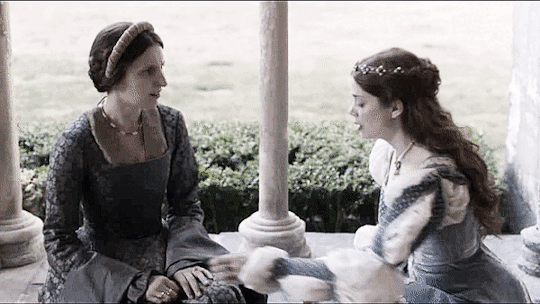

Katherine of Aragon & Margaret Plantagenet
They had known each other since Katherine first came to England. Margaret’s late husband, Richard Pole, had been Prince Arthur’s Lord Chamberlain, and she had accompanied him to Wales during the brief five-month marriage of Katherine and her first husband. Royal by birth, Margaret Pole was one of the most important ladies of high rank in the kingdom and one of the last Plantagenets at the Tudor court.
There a bond seems to have been forged between the two women, despite the fact that Katherine spoke little English and was 12 years younger than Margaret. The Spanish princess soon learned that her father had demanded the execution of Margaret’s brother before she arrived in England, and she was horrified. Feelings of guilt over the Earl of Warwick’s unjust execution pushed Katherine to seek Margaret’s friendship. Many years later, Margaret’s son, Reginald Pole, recorded that Katherine was “very much bound to recompense and requite us [the Pole family] for the detriment we had received on her account (although she was not in the least to blame for it), and to show us every kindness, having found by experience that in all her sorrows and afflictions, from no family of the realm had she ever received greater consolation than from ours, although for her sake we had received so many injuries”
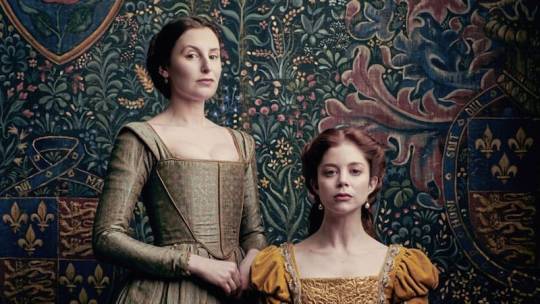
Arthur’s premature death at Ludlow parted them, but they continued to correspond until Henry VIII’s accession rescued Katherine from penurious widowhood and made her the queen consort she had always expected to be. Margaret had also known financial distress during this period (her husband died in 1504), but her loyalty and friendship were not forgotten. She came to court with her eldest son to attend Katherine’s coronation and was soon appointed one of the queen’s chief attendants. In 1512, possibly at his wife’s behest, Henry VIII granted Margaret’s petition for restoration of the earldom of Salisbury and she became a countess in her own right.
Katherine chose Margaret to be the governess of her daughter, Princess Mary. Margaret had formed a close bond with Katherine and treated her daughter with the same warmth. Katherine would gladly have seen a marriage between her daughter and her friend’s son Reginald. The Pole family fortunes crashed after Anne Boleyn became the second wife of Henry VIII. Not surprisingly, Margaret had sided with Katherine and Mary during the divorce struggle. Lady Salisbury was known for her devout Roman Catholic beliefs. When Princess Mary was declared a bastard in 1533, Margaret refused to give Mary's gold plate and jewels back to Henry VIII. When Mary's household was broken up at the end of the year, the sixty-year-old Margaret Pole asked to serve Mary at her own cost, but was not permitted. Five years after the death of Katherine of Aragon, Lady Salisbury was executed on the scaffold. Her death is one of the most tragic events in Henry VIII's reign.
Sources:
Linda Porter, Mary Tudor:The First Queen Sylvia Barbara Soberton, Great Ladies: The Forgotten Witnesses to the Lives of Tudor Queens
#catherine of aragon#katherine of aragon#catalina de aragon#margaret pole#margaret plantagenet#the spanish princess#charlotte hope#mary i of england#mary tudor#arthur tudor#henry viii#anne boleyn
51 notes
·
View notes
Text
You want Henry V to live longer so that he could finish conquering France.
I want Henry V to live longer so that he could finally compose music for all parts of the Mass and not just the Gloria and the Sanctus.
We are not the same.
#henry v of england#henry iv of england#roy henry#old hall manuscript#we don't know whether roy henry is henry iv or v#but for this post let him be henry v#house of lancaster#house of plantagenet#Spotify
32 notes
·
View notes
Photo








↳ richard iii of england + alphabet
#richard iii#aneurin barnard#the white queen#house york#house plantagenet#history#english history#twq#richard iii of england#anne neville#cecily of york#edward iv#george plantagenet#elizabeth woodville#richard of york#henry vii#margaret of york#john de la pole#historyedit#twqedits*#alphabet*#my gifs#creations*
382 notes
·
View notes
Text






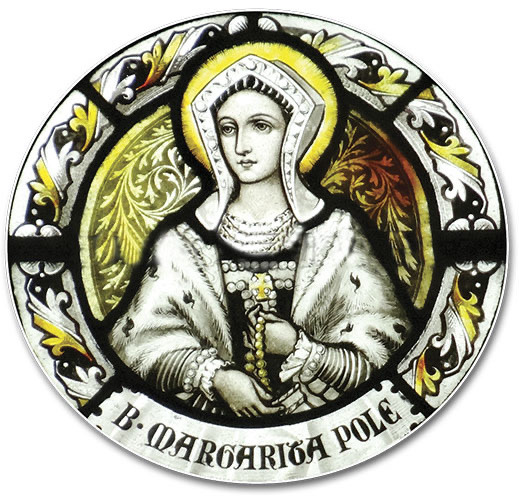
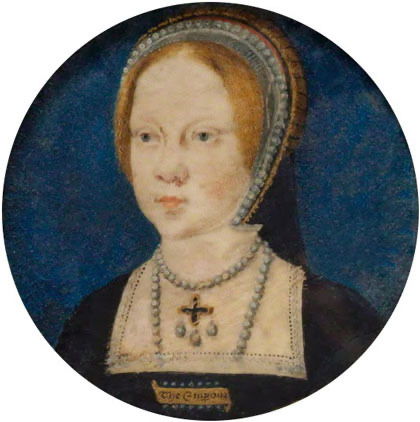
Tudor Week Day 7: Fave Mentor/Mentee Relationship: Margaret Pole, Countess of Salisbury and her charge Mary I
“On 28 May Mary suffered another blow to her emotions. Lady Salisbury was taken from her cell and executed, protesting that she did not know what her crime had been- there had been no trial and no opportunity for her to protest against the Act of Attainder…. Her [Margaret’s] last speech was a prayer for the king, queen, prince and Mary. There is no direct evidence of Mary’s reaction, but unless she were completely heartless, which is not the impression to be gained from her letters or general demeanor, she grieved deeply for the woman who had been her “second mother” and who had loved and cherished her since childhood…” - Melita Thomas, “The King’s Pearl”
#tudorweek2023#tudor week 2023#daily tudors#dailytudors#mary i#Mary Tudor#queen mary i of england#queen mary i#mary i of england#margaret pole#henry viii#tudor history#the tudors#catherine of aragon#english history#tudor era#tudor period#tudor#tudor dynasty#plantagenets#british history#history#mary i tudor#henry viii of england#king henry viii#henry tudor#wars of the roses#renaissance#16th century#sixteenth century
112 notes
·
View notes
Text
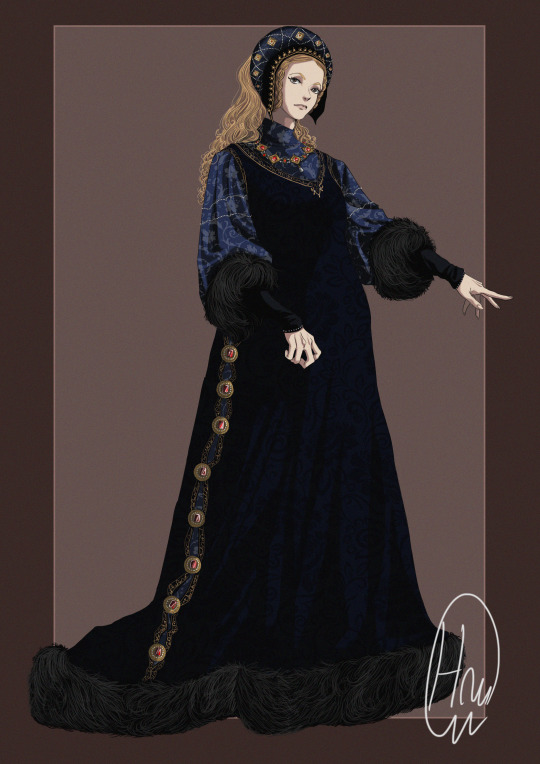
Elizabeth of York, fashion character design. Mourning outfit, c. 1482.
#the wars of the roses#15th century#medieval#middle ages#historical#british history#medieval england#art#illustration#sketch#edward iv#elizabeth woodville#elizabeth of york#henry vii#henry vi#margaret of anjou#margaret beaufort#isabel neville#richard iii#the white queen#the white princess#medieval fashion#historical fashion#character design#artists on tumblr#medieval costume#royals#house of york#plantagenets
320 notes
·
View notes
Note
What do you feel about the house of york
I feel like it's a medieval dynasty that one a war. That's about it.
I also think that Richard Duke of York was nothing more than a jealous cousin that saw the perfect opportunity to climb the ladder and took it, justly paying the price. Edward IV's anger over his and his brother's death is understandable and so were his actions. Too bad that he didn't saw that the Duke of York's ruthless ambitions had trickled down to his sons Richard and George before they tried it with him. I think the Woodvilles were overtly greedy and took too much of the hand that fed them making the nobility hate them, and they also paid for it. I mean, arranging prestige marriages for every single Woodville? I get it, one of them was the Queen, but come on now, they clearly overplayed.
On the whole, I find this representation of the Yorks as this typical Good HeirsTM that took their rightful place on the throne and stepped up through harsh times that persists so much to this day lame and reductive. The truth of the matter is, they were never more just and GoodTM than the Lancasters. The Lancasters successfully organized a coup and sat the throne, the Yorks did the same, demonizing Henry VI and Queen Margaret of Anjou through propaganda as a freak and an overly ambitious femme fatale respectively, while casting their teenage son as a cruel bastard. All for defending fiercely what was by right theirs (we have Shakespeare to blame for that as well).
#wars of the roses#house york#house lancaster#edward iv#richard duke of york#george plantagenet#richard iii#Henry vi#margaret of anjou#edward of westminster#medieval warfare#medieval england#late middle ages
28 notes
·
View notes
Note
everybody shut up you are wrong jonsa era remains unmatched

me since 2016:
#asks#kitsophie fucking in late stage plantagenet england movie REAL and about to make jonsa posting era look sane#but good to see jonsa up there with duneposting and hotd s1 era the ogs are still with me 💋 😘
24 notes
·
View notes
Text
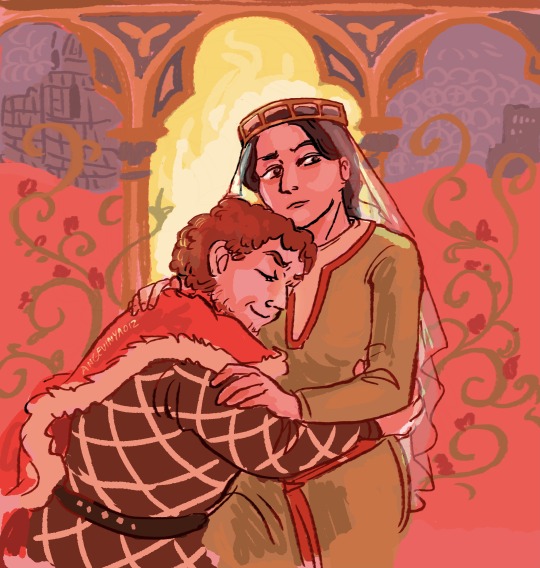
“And if I break this oath, may the God of Love torment me and never bring release until the day I die”
(Henry II and Eleanor of Aquitaine, from The Devil’s Crown 1978 …Happy Valentine’s)
#my art#the devil’s crown 1978#tdc 1978#Henry ii of England#Eleanor of Aquitaine#brian cox#jane lapotaire#the Plantagenets#Angevin empire#Valentine’s Day#from episode 1
45 notes
·
View notes